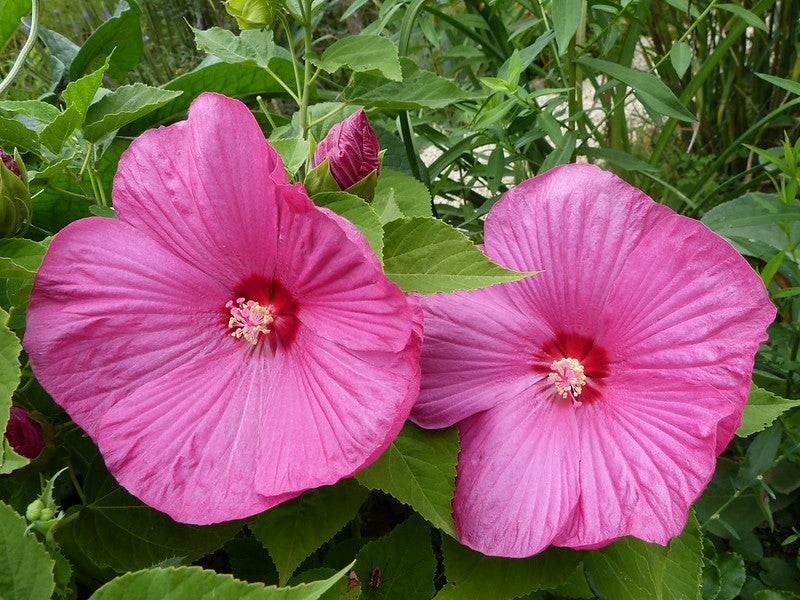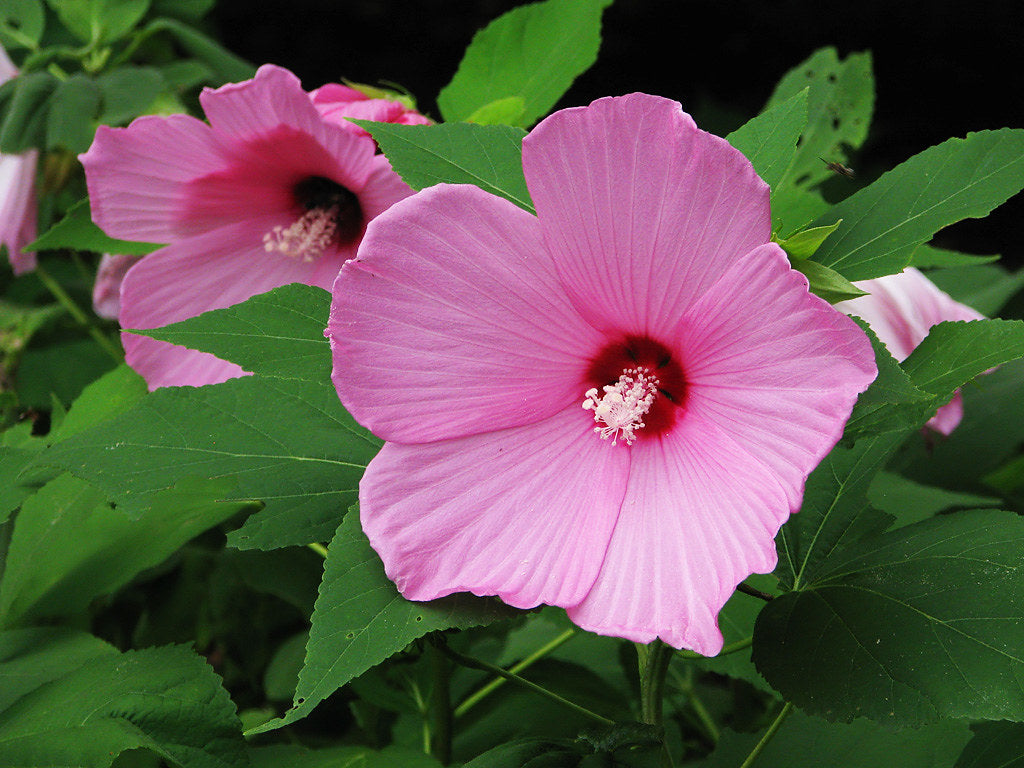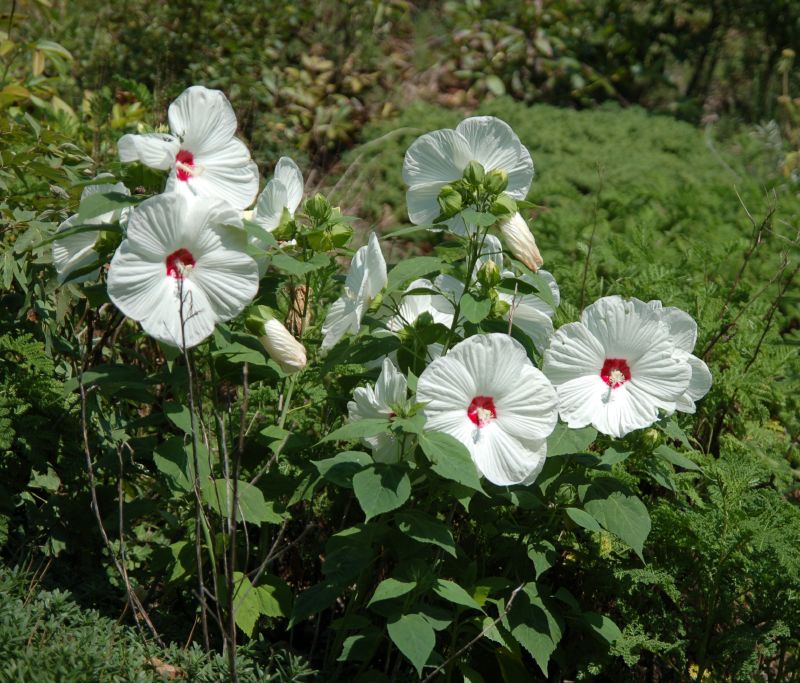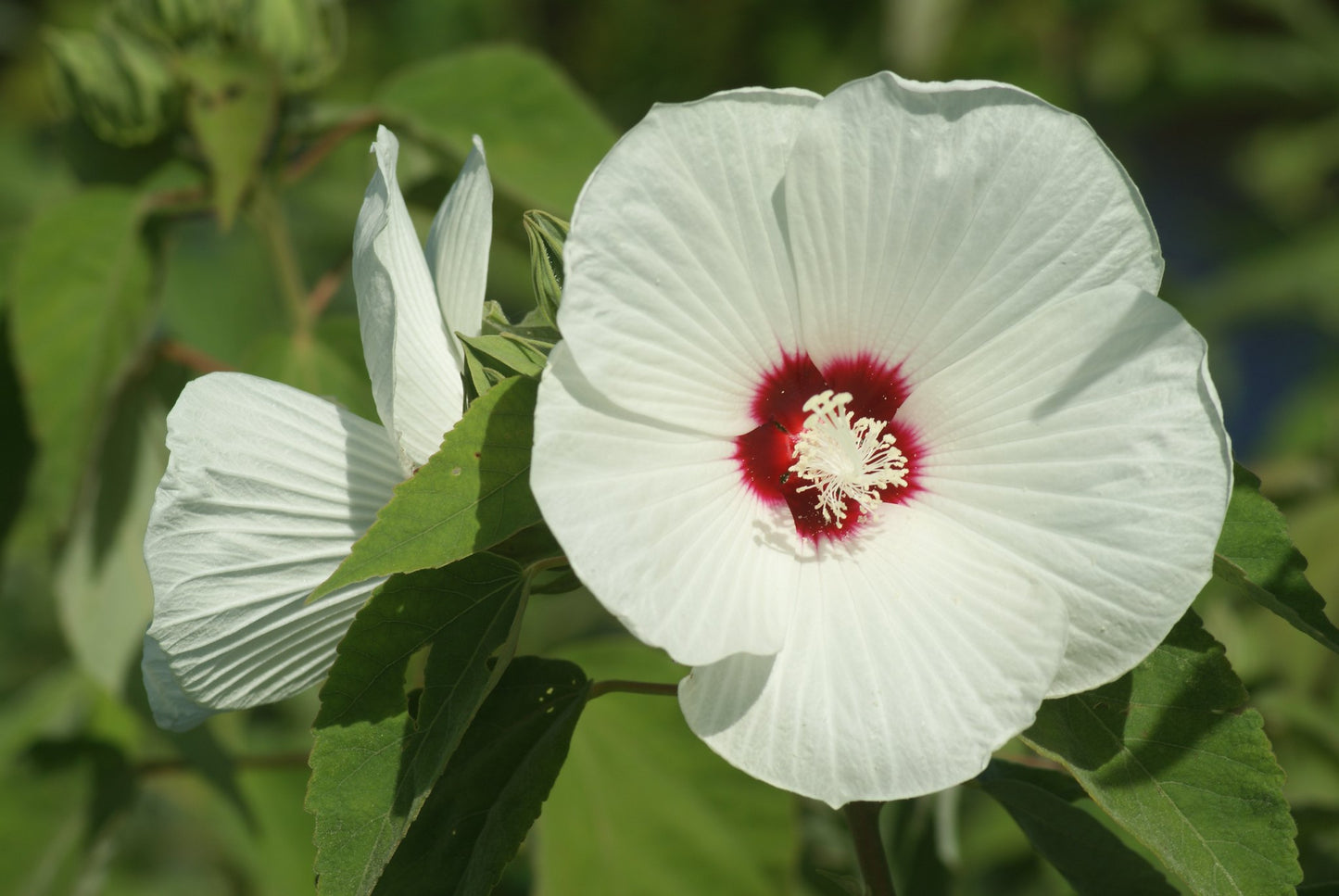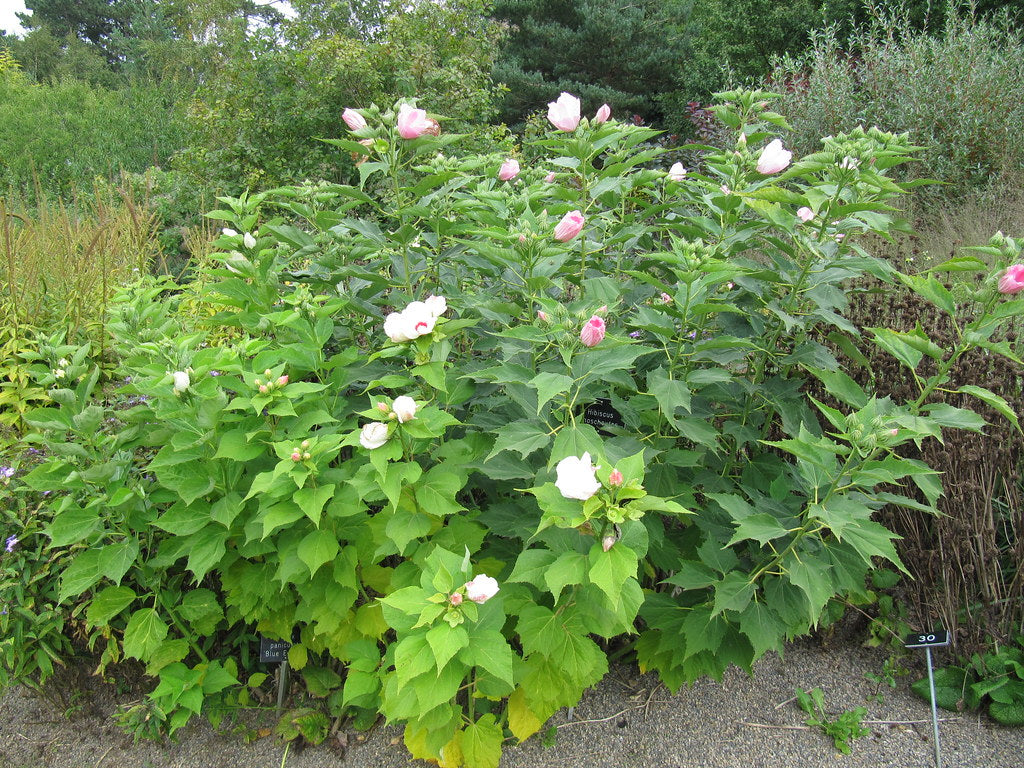Floridaseeds
Swamp Rose Mallow Hibiscus moscheutos 100 Seeds USA Company
Swamp Rose Mallow Hibiscus moscheutos 100 Seeds USA Company
Couldn't load pickup availability
Hibiscus moscheutos, commonly known as the rose mallow or swamp rose-mallow, is a flowering plant species belonging to the family Malvaceae. It is native to wetlands and marshy areas of North America, primarily in the southeastern United States. This plant is known for its large and showy flowers, which come in various colors including white, pink, red, and even bicolor varieties.
Here are some key characteristics and information about Hibiscus moscheutos:
Appearance: Hibiscus moscheutos is a perennial plant that typically grows 3 to 7 feet tall. It has large, lobed leaves that are often heart-shaped and serrated along the edges. The flowers are quite striking, with a prominent central stigma surrounded by showy petals.
Flowers: The flowers of Hibiscus moscheutos can be quite large, ranging from 4 to 12 inches in diameter. They typically have a prominent central column, or "stigma," surrounded by five overlapping petals. The colors can vary widely, and the flowers are often attractive to pollinators like bees and butterflies.
Habitat: As mentioned earlier, Hibiscus moscheutos is commonly found in wetland and marshy areas, often near the edges of ponds, lakes, and streams. It can tolerate standing water for short periods and prefers full sun to partial shade.
Cultivation: This species is popular among gardeners and horticulturists for its stunning flowers. It can be grown in gardens with moist, well-draining soil, and it benefits from regular watering. In colder climates, it may die back to the ground in winter but can regrow in the spring.
Wildlife Value: The flowers of Hibiscus moscheutos are known to attract pollinators such as bees and butterflies. Additionally, the plant serves as a food source for certain caterpillar species, contributing to the local ecosystem.
Growing Instructions
The seeds have a hard seed coat that has to be treated, or scarified, in order for water to enter the seeds so that they can sprout.
- Scarify the seeds by nicking or sanding the seed coat.
- Soak the seed in water for 24 hours.
- The seeds like moist soil. Prepare a mixture of half potting soil and half sand, perlite or vermiculite. Put the soil in a pot.
- Sow the seeds ¼ inch deep.
- Water the seeds.
- Place the pots in an area with warm temperatures in full sun or part shade. The seeds take 1-3 weeks to germinate.
- When the seedlings are a few inches tall, they can be transplanted.
Materials
Materials
Shipping & Returns
Shipping & Returns
Dimensions
Dimensions
Care Instructions
Care Instructions
Share

